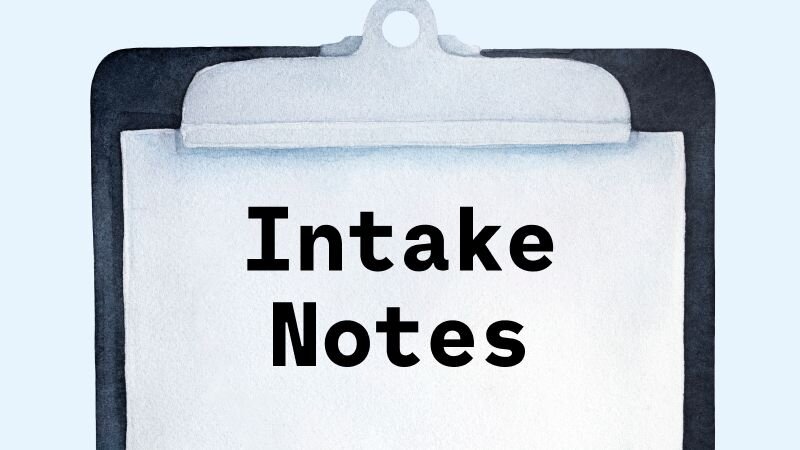
What are therapy intake assessments?
The intake assessment is your chance to get a deep understanding of your patient — and maybe connect some elements from their journey that they wouldn’t connect themselves.

The “golden thread” helps connect the dots between your clinical and administrative work.
A therapist’s unique ability to tune into people’s emotions — and offer real, life-changing support — is part of what makes the job so meaningful. But the administrative parts of working as a therapist, like filling out treatment plans and progress notes, may feel less than rewarding, and, as a result, more stressful.
“If you can connect what you’re doing in therapy to those pieces of documentation, they can actually enhance your treatment,” says Natalia Tague, Headway’s clinician engagement lead.
One great way to connect the dots between your clinical and administrative work — and make both more efficient? Ensure your documentation fulfills the “golden thread” principle.
The best notes reflect the “golden thread” of therapy: A narrative that ties together the client’s therapeutic journey. This sort of continuity is key to making your notes compliant, and can help you provide excellent care to your clients.
The golden thread spanning across all of this documentation, Tague says, can help inform your therapy work and help you stay on track toward your client’s needs and goals — and pivot to provide a different type of care, or even refer the client elsewhere, if needed.
“Everything you do should flow through the same lens,” she says. “It’s about not keeping your documentation and your therapy work separate, but using them together to provide better care.”’
Imagine a client comes in and shares they’re going through a divorce and experiencing low mood, difficulty sleeping, and isolation from friends and family. In your assessment, you consider the person’s history and symptoms before landing on a diagnosis of adjustment disorder. Based on the client’s unique needs and goals, you write up a treatment plan focused on processing emotions, getting better sleep, and reconnecting with their social network.
As sessions go on, you regularly review your diagnosis, treatment plan, and previous notes to ensure you’re still providing the appropriate treatment. Each session, you talk about something related to the treatment plan. Maybe you focus on psychoeducation about how the client’s thoughts are affecting their emotions, you teach them progressive muscle relaxation to help them feel more relaxed before bedtime, or you do a role-play exercise where the client practices asking friends for support.
“No matter what you do, each session should represent a small piece of the current treatment plan,” says Tague.
Then, in your progress notes, you log what you worked on. If, in your review of these notes going forward, you realize your client’s needs are changing — or you’re not meeting the goals you set —you can tweak the treatment plan and goals accordingly.
By maintaining the golden thread throughout your documentation, Tague emphasizes, you can be sure you’re actually giving your clients the support they need while they’re in your care, and feel more confident in your work as a clinician.
All the individual components of documentation, tied together, form the golden thread of therapy. Relying on templates for each one can help keep your clinical narrative organized and consistent.
Headway has templates to ensure effective documentation in your intake session, as you develop and update your treatment plan, and create progress notes. Your job is to tie it all together to ensure you’re doing whatever you can to help your client meet their therapeutic goals.

The intake assessment is your chance to get a deep understanding of your patient — and maybe connect some elements from their journey that they wouldn’t connect themselves.

Whenever you want to change the goal of your therapy care, or the path you want to take with the client to reach that goal, you’ll want to document a treatment plan.

Progress notes are the core piece of documentation a mental health care provider should write after each session with a client, but it’s more than just a record of what happened in the session.